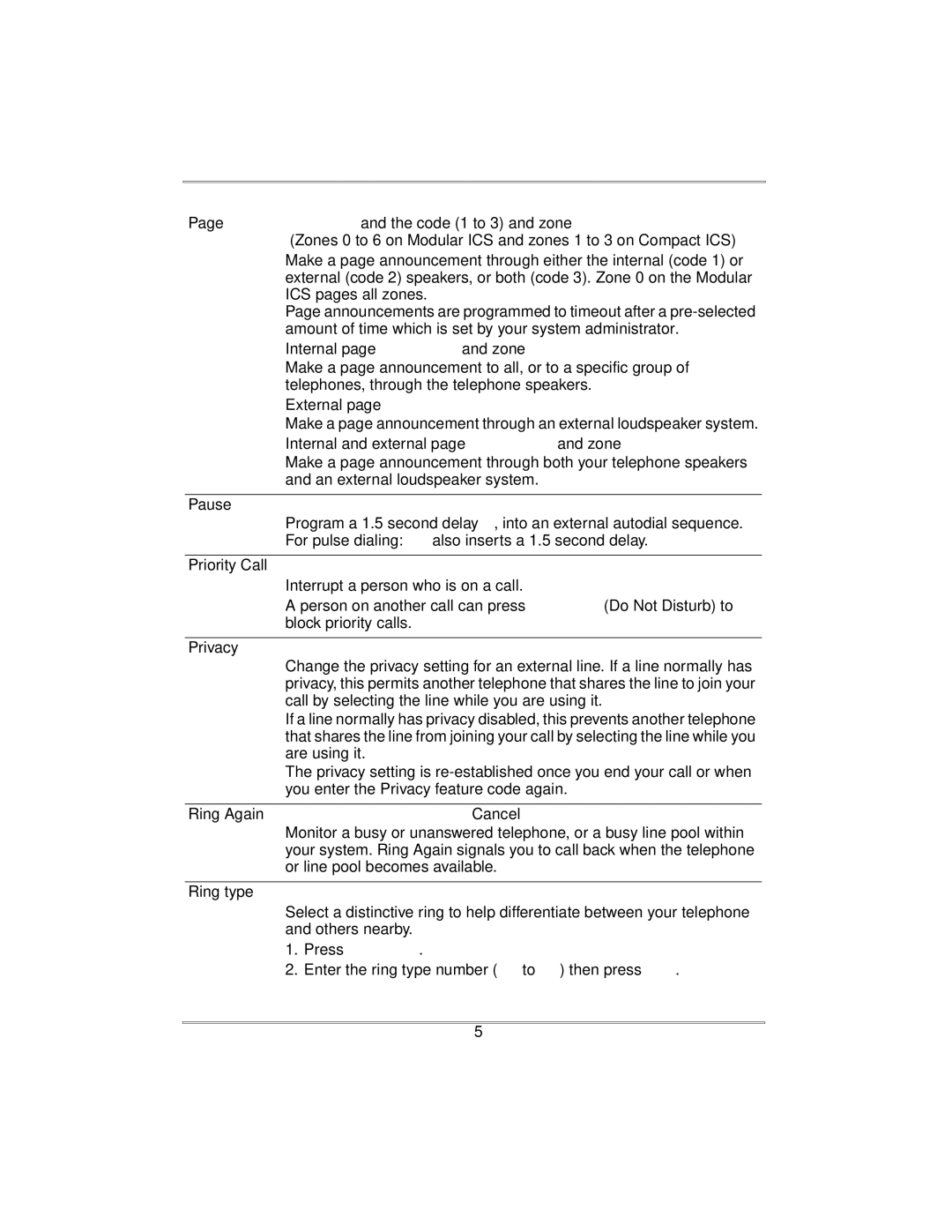Norstar ICS specifications
Nortel Networks Norstar Integrated Communications System (ICS) was a prominent telecommunications solution developed for small to medium-sized businesses in the 1990s and early 2000s. The Norstar ICS provided flexibility, scalability, and cost-efficiency, making it a popular choice for companies looking to enhance their communication infrastructure.One of the defining features of the Norstar ICS was its ability to integrate various communication technologies into a single platform. It combined traditional voice services with advanced features such as voicemail, auto-attendant, call transfer, and more. This integration allowed businesses to streamline their operations and improve customer service through enhanced communication capabilities.
The Norstar ICS utilized a modular architecture, enabling organizations to customize their systems according to their specific needs. Businesses could start with a basic configuration and add modules as their requirements grew. The system supported a range of telephone models, including digital, analog, and IP phones, thus offering flexibility in choosing the right devices for different workplace environments.
Among the key technologies featured in the Norstar ICS was the Norstar CallPilot, a voice messaging solution that provided voicemail and unified messaging capabilities. This allowed users to access their messages via email or the telephone, ensuring that important communications were never missed. The CallPilot system was known for its intuitive interface, making it user-friendly for employees and administrators alike.
Another important aspect of the Norstar ICS was its high level of reliability. Built with robust hardware and software, the system offered impressive uptime and resilience, which was crucial for businesses that relied heavily on communications. Nortel designed the system with built-in redundancy and failover options, ensuring that communication services remained available even during disruptions.
The Norstar ICS also featured advanced call management capabilities, including call logging, caller ID, and hunt groups. These features enabled businesses to manage incoming calls more effectively, distributing them to the right departments or personnel efficiently.
Nortel's Norstar ICS represented an era of innovation in telecommunications, merging traditional and emerging technologies to meet the evolving needs of businesses. Its modular design, reliability, and robust feature set made it a valuable investment for organizations looking to enhance their communication systems. Though newer technologies have since emerged, the legacy of the Norstar ICS continues to influence modern telecommunications solutions.

